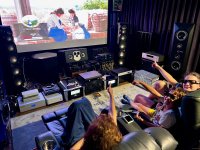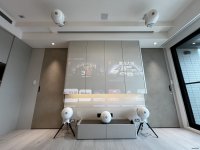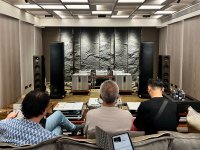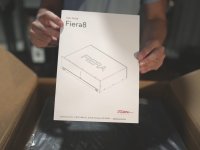|
|
馬上註冊,結交更多好友,享用更多功能,讓你輕鬆玩轉社區。
您需要 登錄 才可以下載或查看,沒有賬號?註冊
x
http://realvision.ae/blog/2011/0 ... eographer-showreel/
The all important Showreel:
A “Stereographer” is an entirely new job profile in modern day movie making. The term itself as well as the job profile has been around since the first 3D movies came about, but it’s only now, that it’s been glamorized since Hollywood decided to ressurect 3D movies all over again.
So how does a Stereographer respond when asked to show his / her showreel? After all there are not that many 3D movies even today to draw experience from! Of the few movies that have been released in 3D, there are some real lemons out there that tried to Cla$h in the box office successes of others. Would the stereographers of such movies actually want to put such kind of work on a showreel?
Directors and DPs (Directors of Photography) have it easy. They can actually show the finished product itself. For instance, a DP can show the technical and aesthetic choices in his/her framing of a scene.
For the Stereographer who actually works behind the scenes with the Director and DP, simply showing a finished movie wont really say much, as it is hard for anyone else but a stereographer to quickly assess such things as slick interaxial pulling, stereo window violations, excessive background parallax or the much higher end work that good stereographers do… well after the shot has been captured on location.
What does a Stereographer do?
Making your mark as a Stereographer:
Before we look at what goes into a good stereographer showreel, let’s take a brief look at what the modern stereographer does in a typical 3D production. The Stereographer is called to wear many hats (or glasses) in today’s 3D movie making. There is popular belief that the profile of a stereographer will quickly die out as Cinematographers learn the nuances of “framing for 3D”.
Let’s examine why this may not be true:
■In a typical movie with a budget worth speaking off, the Gaffer does not do the DPs job, nor does the DP direct the movie, or assemble the camera. Every crew member is assigned a job profile and thus the entire movie unit functions as a well oiled machine to get the scenes captured for the days shoot
■While Cinematographers are justified in wanting to “own” the frame they capture, there is a lot more going on in a 3D movie than simply correct “framing”. The depth script needs to be looked into as the scenes are captured and assembled, later in post, tweaks and error correction is what skilled stereographers help editors with.
■Every scene is unique in the challenges and opportunities presented in making a 3D movie. We have to remember that it’s been only a couple of years that modern 3D movie making has taken off. “ALL” there is to know about 3D scene framing and capture has not yet been encountered. Good stereographers draw on years of experience and everyday experimentation (just as Cinematographers do in traditional 2D movie making) to quickly overcome obstacles, and even take advantage of new opportunities that present themselves in this exciting new medium.
■A Stereographer can cement his/her place in 3D movie making by going a little further and knowing about technology and workflows during pre-production (previz), production and post-production. DPs don’t really have the time nor inclination to thoroughly be involved in all these areas.
■Modern 3D movie making *does* depend on technology, unlike the old adage “tools does not a carpenter, make”. Today technology is what allows 3D movies to succeed where previously time and again 3D was relegated as a fad. Good stereogaphers will be tech savvy as well as understand this new medium and language of visual storytelling.
This is only part of the profile of a modern day stereographer. It would be foolish to think that knowing the rules of scene framing and using a calculator for setting of camera interxial and convergence settings alone will make for great 3D movies without the need for this vital 3D movie crew member.
However, this does not mean that every stereographer is in-dispensable. TRON was made rather well when the Cinematographer took on the role of Stereographer. There are exceptions to any rule!
Advantage: Stereographer
So what would go into a Stereographer’s Show-Reel to suitably endorse their status?. Let’s look at some of the high-end Stereoscopic 3D movie making skill sets needed, to guarantee a stereographer a job in today’s and tomorrow’s 3D movies.
Knowledge of Post Production Workflows:
It’s a well known fact that the big players in non-linear video editing (NLEs) were caught napping when Stereoscopic 3D movies emerged today. Hasty kludges were put into place for popular (and expensive) NLEs to enable them to edit stereoscopic HD video much less 2K / 4K. The price for this “luxury” was even higher….meanwhile, solutions from Adobe and Nvidia, supposedly regarded as consumer grade affairs, already provided real time 4K capable stereoscopic editing and compositing. Such systems can be carried in-the-field and provide realtime or near realtime true stereoscopic 3D edits to the Director and the Video Village at a shoot.
A good stereographer would demonstrate this kind of aptitude for technology and include their knowledge of all aspects of 3D movie making in their show-reel. Stereographers who demonstrate communications skills with the scriptwriter, Director, DP, Editor and VFX team will endorse their position as part of a 3D movie crew.
Shooting 3D without a Beam-Splitter rig:
The clip above shows the first 2 seconds captured with a Parallel 3D camera rig. As Cinematogaphers and even novice stereographers know, this leads to a wider interaxials, that is a taboo in modern day 3D movies that are projected on cinema screens approx 30 to 40 feet wide. The resulting imagery will have excessive positive and/or negative parallax. Thus a beamsplitter 3D rig is crucial and currently the only way to get smaller than human eye interocular (interaxial) spacing for cameras.
In the clip above, the stereographer with proper planning and doing some previz prior to the shoot, combined with hardware and software knowledge, can if needed, get away without the need for a cumbersome BeamSplitter rig and it’s associated caveats such as light loss due to the mirror, mis matched polarization issues, mirror warping, dust, camera rig weight and more…
The next 2 seconds shows a “virtual interaxial” computed entirely in software. This means that interaxial can be changed after the fact. This is not a simple H.I.T (horizontal image translation) being performed, but a true warping of pixels to create an in-between camera pair that is other wise only possible using a beam-splitter rig.
Rather than showing a clip from some movie as a show-reel, the astute stereographer can demonstrate his/her versatility and problem solving capability for s3D where physically taking a beam splitter rig may not be practical due to geography of location or other physical and budgetary constraints.
Producers, Directors and Cinematographers are looking for solutions to simplify 3D movie making, and Stereographers need to be on top of their game in devising and recommending solutions. While such 3D volume sculpting may not work on every possible scene, with a combination of on-location previz, proper framing of scene and good VFX artistes such workflows can be employed when no other easy solution can be arrived at.
( Real Vision would like to thank The Foundry for supplying us a full license of the software NUKE and Ocula).
Include Depth Scripts in your Show Reel
3D Depth Scripts and Depth Budgets:
A stereographers show-reel will make an impression on viewers if it contained examples of how the stereographer took the movies storyboard and gave it the depth treatment. A visual and descriptive depth script and Depth Budget will impress on Producers and Directors, the talent of the Stereographer, far more than taking finished clips from previous movies (of which there may not be many for all but the most sought after stereographers today).
Stereographers looking at making a break into the movies, could do well by taking current storyboards of 2D (and 3D) movies and giving them a depth treatment. This sort of “Thinking in 3D” is the need of the hour for making 3D movies with meaning.
Stereographers showreel with 3D Previz
Previz and the Disciplined Stereographer:
Previz is what saves time and money on a 3D shoot. A few examples of real world locations either outdoor or indoor, done in 3D software or on dedicated previz systems for stereoscopic 3D, such as the excellent FrameForge 3D, will go a long way in establishing a Stereographers credentials and discipline in his/her art.
Previz can also include actual stereoscopic 3D still and videoclips of locations. For Stereographers with no 3D movies under their belts, doing animated previz of real world locations is an asset and demonstrates their understanding of stereoscopic 3D movie making. Previz software can use actual measurements and camera FOV and characteristics for impressive animated output that should belong on every stereographers show-reel.
Stereoscopic 3D movies are "Hybrid"
VFX in Stereoscopic 3D:
Modern movies, both 2D and 3D are today are done with what we’d call, “Hybrid Cinematography”. There is hardly any movie where Principal Photography is the finished product. In the case of 3D movies, simple tasks such as geometry correction, stereowindow setting and depth tweaking and sweetening is what every stereographer worth their salt needs to know about either hands-on, or be able to guide an editor or VFX team to achieve the end result.
However, it gets a bit more complex and challenging doing high end VFX work in stereoscopic 3D for effects that use Green Screen keying, Matchmoving in stereo and more. In 2D movies it is easy to cheat, in stereoscopic 3D because of the ability of the medium to “record” spatial information in a scene, most VFX tricks fall flat, and true attention to detail needs to be paid to maintain that suspension of disbelief and audience immersion. When done right the end results speak for them selves in the handful of good 3D movies, when done in a shoddy manner, the stereographer who green lights such work shows their caliber (budgetary/time constraints disclaimers should be verified)
A Stereographer who knows the workings behind how green screen in 3D is done, what match moving and stereoscopic tracking is, and can supervise a team of roto-artistes will go a long way in securing his/her career in the industry. Stereoscopic 3D QC is the need of the day and will always be a skillset that is in demand for 3D movie making.
Note: the Stereographer does not have to be able to operate software and systems hands-on, but learning what’s possible…asking what-if questions and working with the VFX team to achieve results, is what counts. Examples of this level of expertise is what should go into the Stereographers Show-reel.
RealVision would like to thank The Pixel Farm for the full license use of PFTrack for stereoscopic 3D matchmoving. PFTrack also creates excellent depth-maps discussed below.
2D to 3D..Tricks, Tips and more…
A good stereographer has a whole arsenal of techniques to draw from, for any given challenge. How much planning, cost, trial and error would go into executing an establishing aerial shot in a 3D movie that showed correct depth? This article on doing aerial stereoscopic 3D cost effectively has already saved at least one movie Studio a lot. (They wrote in to say thankyou).
2D to 3D conversion is a great VFX tool, and has it’s place in stereoscopic 3D post production. There are times when anomalies creep in during stereoscopic 3D capture on location. Such footage needs to then be converted from the good “eye” (camera) to create a correct perspective match.
Stereographers who know how and more importantly WHEN to use 2D to 3D conversions are an asset to any 3D production, from feature length productions to 3D short films. Blatantly shooting in 2D and passing it through “conversion” is of course what Real Vision is against.
…We have not touched on areas such as working with a colorist for color grading of a 3D movie etc.. Samples of such knowhow is what should be on a Stereographer’s showreel.
With 3D movies still gaining ground, a Stereographers Show-reel today should comprise these elements rather than finished movie clips. Animated stereo 3D movies is one exception where a finished animation piece can show a before/after result and is easier to understand to Producers/Directors. However, a finished Live Action piece would actually be what VFX artistes, DPs and Directors have on their showreel, even though the stereographer is the behind-the-scenes glue that holds together these different disciplines and departments of the 3D production. |
|




